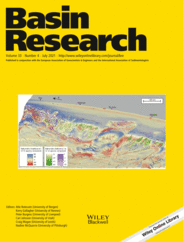
Full text loading...
 , Xiangchun Chang1,2
, Xiangchun Chang1,2 , Zhongquan Liu3, Yumao Pang1,2
, Zhongquan Liu3, Yumao Pang1,2 , Youde Xu3, Lixin Mao4
, Youde Xu3, Lixin Mao4 , Pengfei Zhang1, Guo Chen1
, Pengfei Zhang1, Guo Chen1
The applications of MPGA‐DTW utilized for division and correlation of stratigraphic sequence in this study is based on multiple wireline logs. The integrated results of the sequence boundaries searched by the MPGA were consistent with the sequence boundaries revealed by commonly used approaches based on geophysical data and spectral trend attribute analyses (wavelet transform, maximum entropy spectrum, time‐frequency analyses, and integrated prediction error filter). This study reveal that the combination of MPGA‐DTW may be a powerful tool for intelligent sequence stratigraphy division and correlation.
The division and correlation of sequence stratigraphy are one of the essential steps in petroleum exploration. To comprehensively utilize the sequence stratigraphic information implied in multiple wireline well logs and improve the accuracy and reliability of sequence stratigraphic division, based on the edge detection, optimal partition, and natural evolution theories, and realizes the information fusion (formed one ‘chromosome’) of multiple wireline well logs (named as ‘genes’) which can reflect the feature information of sequence stratigraphy by using multipopulation genetic algorithm (MPGA) based on Fisher algorithm, in this study, geophysical data (wireline well logs and 3D seismic data) were used for spectral trend attribute analyses (wavelet transform, maximum entropy spectrum, time‐frequency analyses, and integrated prediction error filter). Since the seismic reflection characteristics of K1q were difficult to identify and considering subjective factors in conventional methods, a MPGA was also used to intelligently identify the sequence stratigraphy framework of the Lower Cretaceous Qingshuihe (K1q) Formation. Since the MPGA is an optimization algorithm, the code was run 10 times for accuracy with changes in the dividing layers. The optimal parameters in the process of data fusion (gene combination process) are selected. The sequence boundaries (SBs) searched by the MPGA matched those of the spectral trend attribute analyses, confirming that the MPGA was an effective, fast, and user‐friendly tool for defining the main SBs. MPGA can provide an optimal layering scheme (‘elite population’) through simultaneous searching at multiple depth ranges (‘multipopulation’), recording the optimal SBs (‘elite individuals’) of each population and making the results more convinced. Although simulation solutions may not be unique, the MPGA still provides us a chance to gain some insights into the details of the stratigraphy. Based on this intelligent identification, the maximum flooding surface, two first flooding surfaces (FFS), and three SBs were defined in K1q. The cyclic patterns (prograding, aggrading, and retrograding) were identified. They showed the relationship between accommodation space (related to tectonic subsidence of the Chemo paleo‐uplift) and sediment supply. In addition, dynamic time warping (DWT) technique was used for sequence discrimination and correlation on the integrated prediction error filter analyses curve. A massive pebbly sandstone set, named ‘bottom sandstone,’ was identified in the lowstand system tract of SQ1 (K1q1), constrained by SB1 and FFS1, which was a favourable hydrocarbon exploration target.
]
Article metrics loading...

Full text loading...
References


Data & Media loading...

